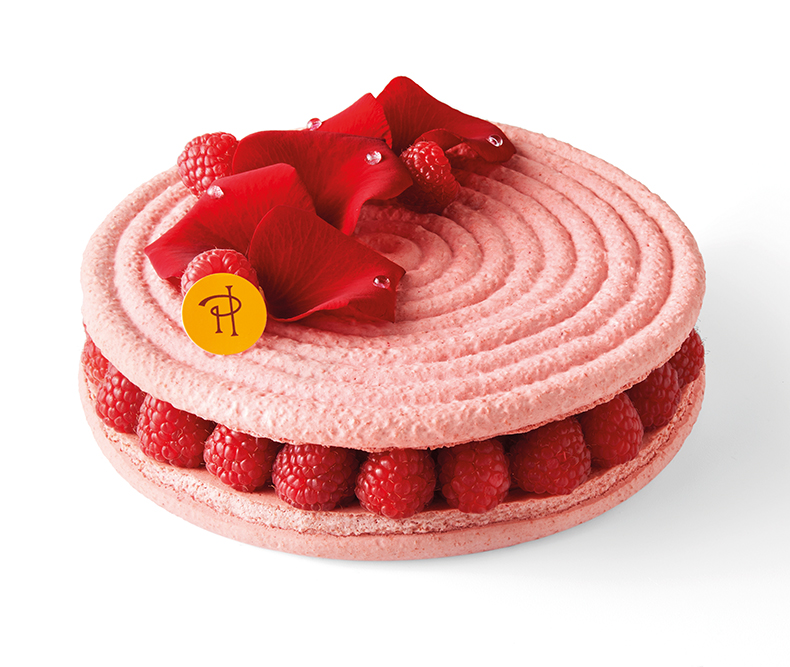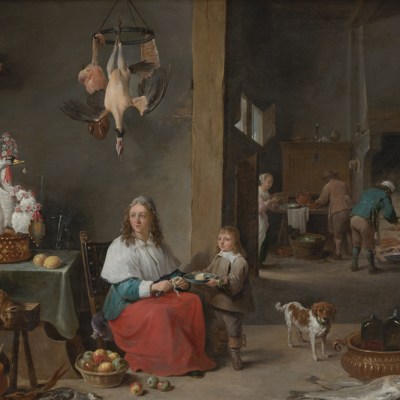From the May 2024 issue of Apollo. Preview and subscribe here.
A sculpture about five inches tall aspires to the heavens. The sphere of the earthen body gives way to a luminous, cream-coloured higher sphere, composed of a dozen much smaller ones, and the whole thing is adorned with shivering, delicate feather shapes. It glistens. It might remind some of an elaborate flower arrangement: perishable, festive. But it also claims a place in memory.
And it is edible. It is in fact a dessert served at Clare Smyth’s London restaurant Core. It’s the Core-teser, a high-end take on a Malteser made from chocolate, malt and hazelnut. Core is a three-Michelin-star restaurant, and the plating – the rather banal word for the arrangement of food on a plate in such a way as to create the appearance of art, but also to ensure the timing and order of a particular series of single and combined flavours – is only the most visual example of why such food would be better described as art than as, well, food.
French patisseries tend to understand this idea. Think of the luminous window of a Pierre Hermé store in Paris, from which shoppers can gaze at a rose, raspberry and lychee Ispahan cake, or a box of mandarin and olive oil macarons. A perfectly executed pastry is an Elizabethan miniature, art whose value is best expressed by our ability to hold it in our hands and marvel at the detail, the crisp lines and the sense of luxurious leisure. It is a gem, and it is therefore appropriate that it should be displayed in windows lit as though they are the windows of a jeweller’s, with lighting that makes the glossy, brilliantly coloured forms glow like treasure.
It costs £235 for the Core Seasons menu, with wine extra. A large Ispahan from Pierre Hermé will set you back €104. Many who would wince at the price might think £300 or so not unreasonable if it bought a work of art. All art is expensive at the point of creation and, although we may be repelled by the idea of very expensive food in a world where people are hungry, we probably don’t think about the cost of a symphony orchestra in the same directly comparative fashion.
The Ispahan cake from Pierre Hermé, comprising a rose macaroon cookie, rose petal cream, raspberries and lychee. Photo: © Laurent Fau

But is it art just because it’s beautiful and expensive? It could certainly be argued that all food aims to satisfy a basic human instinct for harmony, rhythm and balance. But ever since the Middle Ages it has been assumed that eyes and ears are more cerebral and spiritual than noses or tongues. Karen Blixen’s short story ‘Babette’s Feast’ (1958) – later a film – describes a woman’s decision to spend an entire inheritance of 10,000 francs creating just one feast for her severely Lutheran community. They do not entirely understand what she has made, but it nevertheless affects them; many of them rediscover memories and emotions which have been buried for years. Some of them even interpret the effect of a very good dinner in mystical terms. One of the guests says: ‘In paradise you will be the great artist God meant you to be.’ Perhaps a really good dinner is art so celestial that we do not recognise its transformative power.
True, such art does not make a claim to immortality, although it may live long in the memory. I still remember the Michel Bras gargouillou of young vegetables that I ate in 2006. Bras said that he conceived the dish during a run in the countryside in June 1978, when the fields and mountains were in full flower: ‘It was beautiful, it was rich, it was marvellous […] I decided to try to translate the fields.’ Eating it was like sitting in a meadow in bright sunlight picking small leaves and knowing that they were good. It was like Klimt’s Poppy Field (1907); the flowers are bright and distinct, but this matters less than their cumulative effect, which is immediate, immersive and highly controlled. Klimt, however, only pleases the eye; Bras opens all five senses.
If we do decide to respect our more animal instincts rather than recoil from them, we might have to acknowledge that what we actually fear is overwhelming pleasure. Art that is solely visual stays on the wall, however powerful it is in the imagination. It aims to get into our heads, but it doesn’t get into our digestive systems. A form of art that appeals to all the senses at once might be so powerful that we can’t enjoy it without risking losing ourselves in its magic.
From the May 2024 issue of Apollo. Preview and subscribe here.


